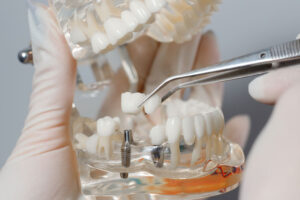
From a shorter healing period to fewer appointments, there are lots of perks of going with laser gum therapy instead of conventional gum surgery. However, the more severe a case of gum disease comes, the less viable laser gum surgery becomes, and the more conventional gum surgery becomes your best treatment option. Simply put: acting early gives you more gum disease treatment options. Find out what makes laser gum surgery so impactful, specifically the LANAP laser protocol, and learn why you need to pursue this option with urgency if you’ve been living with untreated gum disease.
When LANAP Laser Therapy Is Ideal
Laser light is versatile in a dental setting, capable of removing, cauterizing, whitening, tissue regeneration and more. LANAP is a specific laser protocol that’s used in gum disease treatment.
LANAP can handle a wide range of gum disease cases of varying degrees of severity. Moderate to severe cases can be successfully treated with LANAP, but there are some exceptions.
So when is LANAP not ideal? When there’s significant decay on the roots of the teeth, conventional gum surgery is often the more effective treatment option. That’s because your dentist will need to access the roots of the teeth may making cuts to the gums. After the roots are cleaned and rehabbed, the dentist will then suture the gums back in place.
The Perks of Going with LANAP over Conventional Gum Surgery
For people uncomfortable with the idea of conventional gum surgery and are looking to avoid, LANAP is a much easier pill to follow. LANAP entails less bleeding, less discomfort and no stitches. You’ll still likely need local anesthesia to numb your mouth and to eliminate the possibility of feeling any discomfort, but you’ll heal much faster with LANAP. You won’t need stitches, which means there’s no need for a follow-up appointment to have stitches removed.
More on Periodontics and LANAP in Greenwich, CT
Take a moment to schedule a consultation with a local dentist to learn more about your options for periodontics and LANAP in Greenwich, CT.



